Showing Spotlights 17 - 24 of 318 in category All (newest first):
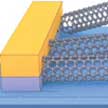 The detection of carbon monoxide (CO) in the air is a vital issue, as CO is a highly toxic gas and an environmental pollutant. Carbon monoxide is poisonous because it blocks the binding site for oxygen in hemoglobin. It is exactly this principle - a porphyrin ring with a central iron or cobalt atom that the poisonous gas attaches to - that can be used to implement sensors to warn against carbon monoxide. While carbon monoxide sensors have been extensively researched and commercialized, none make use of a molecule that can be voltage-activated using a newly reported method.
The detection of carbon monoxide (CO) in the air is a vital issue, as CO is a highly toxic gas and an environmental pollutant. Carbon monoxide is poisonous because it blocks the binding site for oxygen in hemoglobin. It is exactly this principle - a porphyrin ring with a central iron or cobalt atom that the poisonous gas attaches to - that can be used to implement sensors to warn against carbon monoxide. While carbon monoxide sensors have been extensively researched and commercialized, none make use of a molecule that can be voltage-activated using a newly reported method.
Dec 20th, 2017
 Researchers have focused on nanocellulose as a novel biomaterial with industrial and scientific applications, which range from the creation of new kinds of commercially useful materials and uses in medical technology all the way to the food and pharmaceutical industries. Engineers now have developed a new use for nanofibrillated cellulose by combining it with carbon nanotubes to form strong, conductive microfibers through a 3D-printing process. The team's 3D-printed wood nanocellulose-carbon nanotube microfibers combine high electrical conductivity and mechanical strength, which can be potentially used in wearable electronics with high performance and low cost.
Researchers have focused on nanocellulose as a novel biomaterial with industrial and scientific applications, which range from the creation of new kinds of commercially useful materials and uses in medical technology all the way to the food and pharmaceutical industries. Engineers now have developed a new use for nanofibrillated cellulose by combining it with carbon nanotubes to form strong, conductive microfibers through a 3D-printing process. The team's 3D-printed wood nanocellulose-carbon nanotube microfibers combine high electrical conductivity and mechanical strength, which can be potentially used in wearable electronics with high performance and low cost.
Sep 25th, 2017
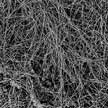 Turning atmospheric carbon dioxide (CO2) into valuable products seems like a great idea to help remove this greenhouse gas to mitigate climate change. Using a process of molten carbonate electrolytic transformation of CO2 to carbon nanotubes, researchers have now demonstrated 'carbon nanotube wool'. These are the first carbon nanotubes that can be directly woven into a cloth as they are of macroscopic length (over 1mm) and are cheap to produce. The sole reactant to produce the carbon nanotube wools is carbon dioxide. This transforms CO2 from a pollutant into a useful, valuable resource.
Turning atmospheric carbon dioxide (CO2) into valuable products seems like a great idea to help remove this greenhouse gas to mitigate climate change. Using a process of molten carbonate electrolytic transformation of CO2 to carbon nanotubes, researchers have now demonstrated 'carbon nanotube wool'. These are the first carbon nanotubes that can be directly woven into a cloth as they are of macroscopic length (over 1mm) and are cheap to produce. The sole reactant to produce the carbon nanotube wools is carbon dioxide. This transforms CO2 from a pollutant into a useful, valuable resource.
Jul 18th, 2017
 New work demonstrates that one of the most important security primitives, i.e. a true random number generator (TRNG), can be realized within the rigorous constraints required for future Internet-of-Things electronics. The solution-processability of semiconducting single-walled carbon nanotubes allows to meet these strict constraints by simultaneously enabling small-scale, low cost fabrication of low-power, ultra-thin, printable, and mechanically flexible security devices. This presents a significant milestone in enabling higher level cryptographic solutions using scalable solution processing.
New work demonstrates that one of the most important security primitives, i.e. a true random number generator (TRNG), can be realized within the rigorous constraints required for future Internet-of-Things electronics. The solution-processability of semiconducting single-walled carbon nanotubes allows to meet these strict constraints by simultaneously enabling small-scale, low cost fabrication of low-power, ultra-thin, printable, and mechanically flexible security devices. This presents a significant milestone in enabling higher level cryptographic solutions using scalable solution processing.
Jul 12th, 2017
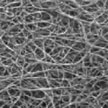 In spite of the numerous research efforts regarding the development of miniaturized, low-cost, and highly sensitive sensors based on different organic and semiconducting materials, carbon nanotubes still remain the most promising ones. An international team of researchers has now developed a simple way for fabrication and operation of carbon nanotube-based chemical sensors. The sensor consists of carboxylated single-walled carbon nanotubes, which were spin-coated over the polymer substrate between sputtered metal electrodes.
In spite of the numerous research efforts regarding the development of miniaturized, low-cost, and highly sensitive sensors based on different organic and semiconducting materials, carbon nanotubes still remain the most promising ones. An international team of researchers has now developed a simple way for fabrication and operation of carbon nanotube-based chemical sensors. The sensor consists of carboxylated single-walled carbon nanotubes, which were spin-coated over the polymer substrate between sputtered metal electrodes.
Jun 19th, 2017
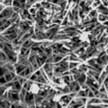 In two new studies, researchers show that cement plants can have their carbon dioxide exhaust eliminated while co-producing carbon nanotubes. They demonstrate that with their C2CNT (carbon dioxide into carbon nanotubes) process, a wide portfolio of tailored carbon nanotubes, such as those with special shapes or conductivity can be made. C2CNT is a straightforward process that transforms CO2 to carbon nanotubes by molten electrolysis with inexpensive (nickel and steel) electrodes and low voltage. This synthesis consumes only CO2 and electricity, and is constrained only by the cost of electricity.
In two new studies, researchers show that cement plants can have their carbon dioxide exhaust eliminated while co-producing carbon nanotubes. They demonstrate that with their C2CNT (carbon dioxide into carbon nanotubes) process, a wide portfolio of tailored carbon nanotubes, such as those with special shapes or conductivity can be made. C2CNT is a straightforward process that transforms CO2 to carbon nanotubes by molten electrolysis with inexpensive (nickel and steel) electrodes and low voltage. This synthesis consumes only CO2 and electricity, and is constrained only by the cost of electricity.
Mar 21st, 2017
 Carbon nanotubes (CNTs), by possessing a uniquely large disparity among its intertube and intratube interaction strengths, have been established as ultralow friction nanostructures and are serving as testbeds for tuning frictional response. In new woirk, researchers now have revealed the phononic origins of friction in CNT oscillators. This work, for the first time, provides a precise connection between individual phonon mode scattering and friction force.
Carbon nanotubes (CNTs), by possessing a uniquely large disparity among its intertube and intratube interaction strengths, have been established as ultralow friction nanostructures and are serving as testbeds for tuning frictional response. In new woirk, researchers now have revealed the phononic origins of friction in CNT oscillators. This work, for the first time, provides a precise connection between individual phonon mode scattering and friction force.
Mar 6th, 2017
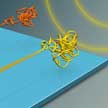 Great effort has been applied on the controllable synthesis of ideal carbon nanotubes (CNTs). However, it's almost impossible to directly synthesize pure semiconducting CNTs by an in situ catalytic reaction alone, without any post-separation, when only small amounts of metallic CNTs may cause catastrophic device shorting failures. That is why the synthesis of CNTs with consistent chirality and high density is facing a bottleneck. A group of researchers in China have creatively proposed a novel method by entangling an individual decimeter-long CNT with a diameter of 2 nm into a large tangle with high density and consistent chirality.
Great effort has been applied on the controllable synthesis of ideal carbon nanotubes (CNTs). However, it's almost impossible to directly synthesize pure semiconducting CNTs by an in situ catalytic reaction alone, without any post-separation, when only small amounts of metallic CNTs may cause catastrophic device shorting failures. That is why the synthesis of CNTs with consistent chirality and high density is facing a bottleneck. A group of researchers in China have creatively proposed a novel method by entangling an individual decimeter-long CNT with a diameter of 2 nm into a large tangle with high density and consistent chirality.
Dec 28th, 2016
 The detection of carbon monoxide (CO) in the air is a vital issue, as CO is a highly toxic gas and an environmental pollutant. Carbon monoxide is poisonous because it blocks the binding site for oxygen in hemoglobin. It is exactly this principle - a porphyrin ring with a central iron or cobalt atom that the poisonous gas attaches to - that can be used to implement sensors to warn against carbon monoxide. While carbon monoxide sensors have been extensively researched and commercialized, none make use of a molecule that can be voltage-activated using a newly reported method.
The detection of carbon monoxide (CO) in the air is a vital issue, as CO is a highly toxic gas and an environmental pollutant. Carbon monoxide is poisonous because it blocks the binding site for oxygen in hemoglobin. It is exactly this principle - a porphyrin ring with a central iron or cobalt atom that the poisonous gas attaches to - that can be used to implement sensors to warn against carbon monoxide. While carbon monoxide sensors have been extensively researched and commercialized, none make use of a molecule that can be voltage-activated using a newly reported method.
 Subscribe to our Nanotechnology Spotlight feed
Subscribe to our Nanotechnology Spotlight feed





